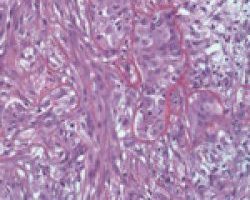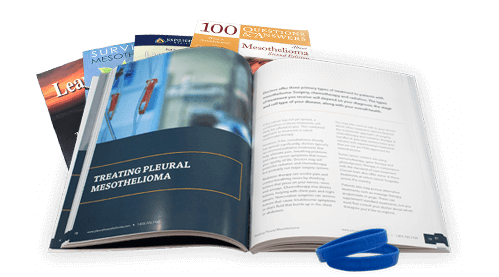Biphasic refers to a cell type that makes up pleural mesothelioma tumors. Biphasic tumors are a mix of cube-shaped epithelial cells and spindle-shaped sarcomatoid cells.
How Common Is the Mesothelioma Biphasic Cell Type?

Biphasic is the second-most common cell type for mesothelioma.
About 20 to 35 percent of all malignant mesothelioma cases are biphasic. It is less common than the epithelial cell type and more common than sarcomatoid type.
Biphasic cell mesothelioma is found more often in the pleural form of the disease than in other forms of mesothelioma.
What Are the Symptoms of Biphasic Pleural Mesothelioma?
Symptoms of biphasic pleural mesothelioma can resemble signs of a less serious condition.
A 2019 Expert Review of Respiratory Medicine article describes signs of the disease as nonspecific. They can include cough, shortness of breath, chest wall pain, fatigue and weight loss.
If you have a history of asbestos exposure and experience any symptoms of pleural mesothelioma, discuss this with your doctor.
Letting your doctor know about your past work around asbestos will help minimize the risk of misdiagnosis.

How Is Biphasic Pleural Mesothelioma Diagnosed?
Determining the mesothelioma cell type is part of the diagnostic process for pleural mesothelioma.
Sometimes the two cell types making up a biphasic tumor grow together. In many cases, they appear in separate areas of a single tumor. A single biopsy (tumor tissue sample) may only contain one of the two types of mesothelioma cells making up the tumor, leading to misdiagnosis.
For this reason, multiple biopsies from all identified pleural mesothelioma tumors is the best way to obtain an accurate diagnosis of the biphasic cell type.
Immunohistochemistry for Diagnosing Mesothelioma Cell Types
The ASCO 2018 pleural mesothelioma treatment guidelines recommend suspected mesothelioma tumors be tested using immunohistochemistry.
This type of tissue testing helps identify the presence and absence of cell markers to confirm the mesothelioma diagnosis and rule out other diseases. These tests also add information to help determine whether the cells are epithelial, sarcomatoid or biphasic.
The 2015 World Health Organization Classification of Tumors of the Pleura recommend a minimum 10 percent sarcomatoid and 10 percent epithelial mesothelioma cells be present in a tumor in order to diagnose biphasic mesothelioma.
However, the 2017 Update of the Consensus Statement from the International Mesothelioma Interest Group indicates these designations may not be useful for determining disease prognosis and treatment choices.
Treatment and Prognosis for Biphasic Pleural Mesothelioma
Mesothelioma treatment is generally chosen based on the stage and location of the tumor rather than the type of cells that are present.
- Chemotherapy
- Radiation therapy
- Surgery
Because mesothelioma is rare, it’s important for patients to find a mesothelioma specialist to guide their care, determine their cell type and create a treatment plan.
You can ask for a second opinion from a mesothelioma specialist — a normal part of the cancer care process — if you feel you need more information to fully understand your medical situation and available treatment options.



